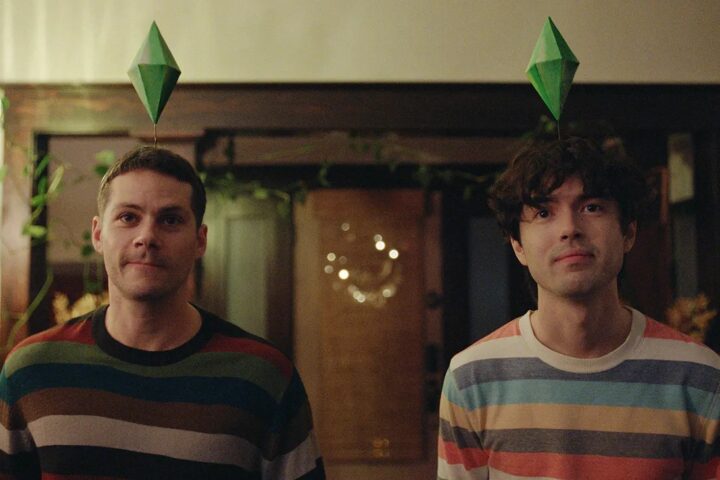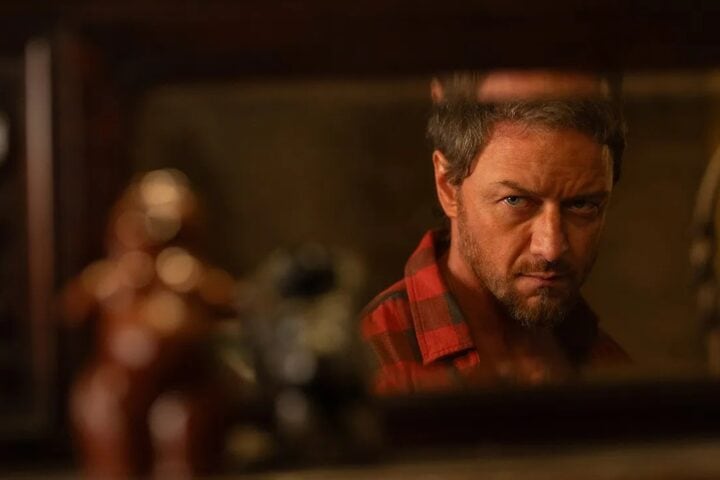In Robert Morgan’s feature-length debut, Stopmotion, animator Ella Blake (Aisling Fransciosi) vows to finish the work of her ailing mother, Suzanne (Stella Gonet). She shuts herself away from the world in an old apartment building, in total dedication to the painstaking process of moving sculpted figures a centimeter at a time. But she soon begins a new work altogether at the behest of a spooky little neighbor girl, only for the unsettling art they create and Ella’s perception of reality to bleed together. Pity, though, that they don’t bleed together enough, as the macabre dream logic that many of Stopmotion’s sequences employ is too often undermined by plot rhythms familiar from so many horror films about trauma.
Morgan swiftly demonstrates his animator’s eye, communicating his ideas with the quickness and clarity of a short film. The very first scene tells us everything about Ella and Suzanne’s relationship from the way they’re dressed in the same blue smock and with their hair pulled back. Ella plainly struggles to find her own voice, toiling in her mother’s shadow. All of that is so clear that further clarifications begin to feel like overkill, such as when a colleague expounds on the influence of Suzanne’s past work or when the mother calls her daughter “poppet.”
To Morgan’s credit, the early mother-daughter scenes are about as explicit as Stopmotion gets in terms of explaining itself. From there, he wastes little time on obvious one-to-one metaphors or overt explanations for things like who the creepy little girl is supposed to be. Instead, Ella’s fears and anxieties are largely suggested through her creations and the way she bristles at certain ideas, with Franciosi channeling a similar intensity to her performance in The Nightingale.
But beyond the methodical scenes of Ella at work, the live-action sequences that dominate the film add little to the lengthy history of horror stories about someone slowly unraveling in isolation. She alienates her boyfriend (Tom York), questions whether she’s truly seeing what she sees, and eventually grows violent. It’s as if the film’s plot is puppeteered by earlier horror films, and in a similar fashion to the initial scene of Ella dutifully following her mother’s instructions.
As Ella begins to incorporate piles of sticks and raw meat into her sculpted figures, the animation takes on a disgustingly tactile quality. Especially of note is one scene where Ella abruptly becomes a tiny white figure beneath the hideous Ash Man that functions as her own film’s antagonist, and she flees through a crack in the wall. Yet the stop-motion only occasionally reaches the imaginative heights of Morgan’s gleefully unhinged and grotesque 2011 short Bobby Yeah, which is largely unencumbered by any need to make sense. A low-rent Repulsion of sorts, Stopmotion attempts to mold those instincts into a discernible narrative shape, and as we watch Ella spiral in the way that characters in stories such as this are often prone to, it’s hard not to lament how obvious and conventional that shape turns out to be.
Since 2001, we've brought you uncompromising, candid takes on the world of film, music, television, video games, theater, and more. Independently owned and operated publications like Slant have been hit hard in recent years, but we’re committed to keeping our content free and accessible—meaning no paywalls or fees.
If you like what we do, please consider subscribing to our Patreon or making a donation.





